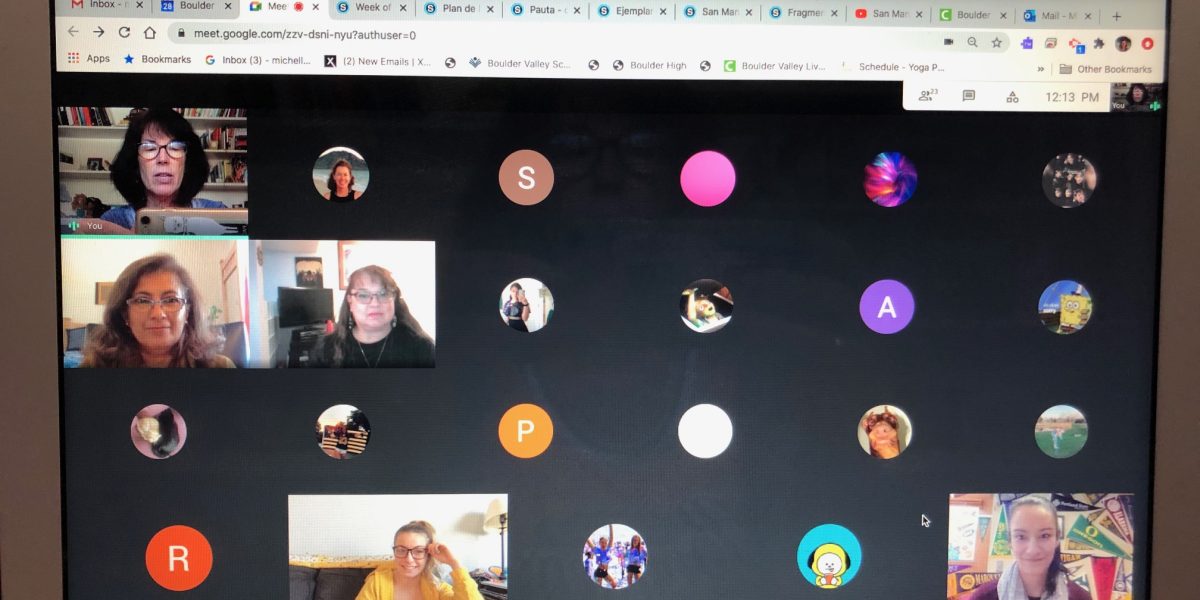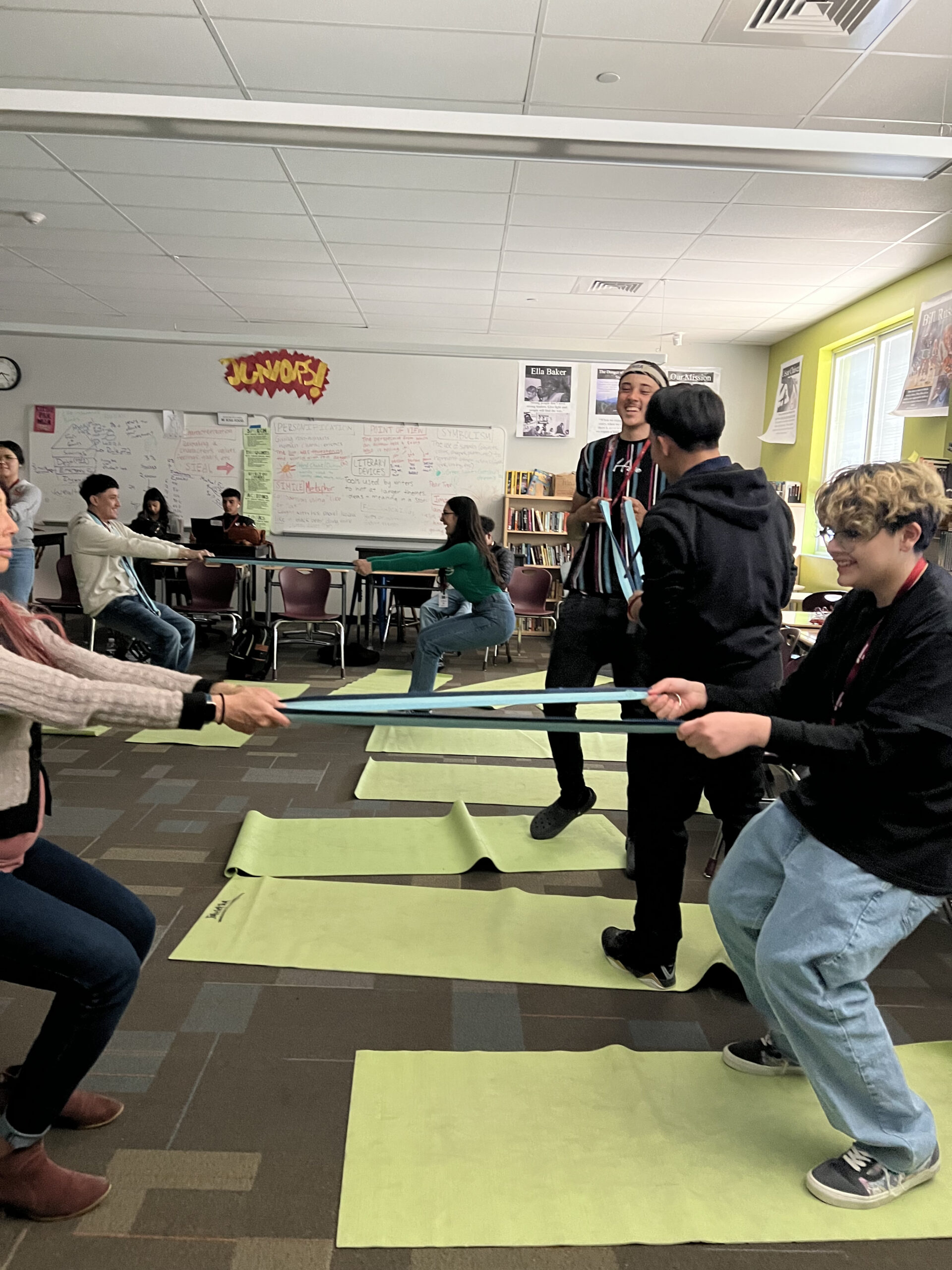By Dee Marie and Rachel Zelaya
We have all been deeply impacted by our current state of social distancing, and we won’t know any time soon the effects of COVID-19 on all aspects of our society. Students are home, and school districts are developing and implementing online learning programs in lieu of face to face education. While this might be better than interrupting the school year completely, what will be the impact of further increasing the time that young people spend on a screen? Over the past several years, researchers have focused on technology and children, and there is reason to be concerned that technology could have a negative impact on child and adolescent brains. It is so important that we begin to understand the potential links between emotional well-being, mental health, and physical outcomes for students growing up with technology. For instance, studies have shown that if digital devices are used more than seven hours per day, this leads to changes in the developing brain. These hours can accumulate quickly when students are using computers for online learning, cell phones to connect with friends, and then watching television with the family to unwind. Even when used in moderation, the quality and quantity of technology has both positive and negative effects on children.
For instance, “young children who get more screen time than doctors recommend have differences in parts of the brain that support language and self regulation,” according to a 2019 study at Cincinnati Children’s Hospital. A NIH study found that children who reported more than two hours a day of screen time got lower scores on thinking and language tests. Developing brains are more malleable than adult brains, and kids who use screens for more than seven hours per day show physical changes to the brain in the form of premature thinning of the cortex. The National Institute of Health informs us that cortical thinning is a typical developmental milestone for adolescents, yet high level technology usage at this age promotes premature thinning which influences specific cognitive performance such as: verbal learning, memory, visual spatial functioning, spatial planning and problem solving.
The avoidance of screen time for children under 18 months is advised except for “video chatting,” according to the American Academy of Pediatrics. In 2018, the French Ministry of Health suggested that there be no screen time for children until the age of 3. In fact, children under the age of 3 should not even be in the same room as a television being viewed, as there may be adverse effects impacting cognitive outcomes later in life.
On a more positive note, researchers note that time spent watching educational programming may promote literacy, mathematics, problem solving and science skills as well as pro-social behavior in preschool children. Educational activities on devices such as attention training games have also been linked to improvements in executive attention and intelligence. Therefore, the quality of programming is essential.
In teenagers, screen time – specifically gaming – affects regions of the brain associated with impulse control, sensorimotor coordination and an increase in the amounts of dopamine or reward pathways. This is related to craving and typically associated with substance addiction. This addictive propensity has recently been added to the Diagnostic and Statistical Manual of Mental Disorders and is known as “Internet Gaming Disorder.”
Yet, once again there is a silver lining. Playing educational games, especially those that are interactive, or playing games that cause physical activity and interaction – can be positive. An increase in visual-spatial skills, attention, and processing speed have been observed, as well as enhanced reading outcomes in dyslexic children. However, even the games that involve physical activity should not be substitutes for standard fitness routines.
Social media use, especially at night, has been correlated with poor sleep quality, low levels of anxiety, and even depression amongst the teen population. The blue light emission from screens decreases melatonin production, which delays and shortens sleep patterns. Teens who interact with Facebook have been shown to increase cortisol levels which prepares the body to react to a stressor, the “fight or flight” response. It has been shown that those who engage in social media at night wake up with higher levels of cortisol. This is associated with a decrease in well-being and reduced physical and mental health.
Certainly, at this time, research on children and adolescents is still in its infancy stages regarding the long term consequences of technology on the developing brain. For example, media multitasking called “screen-stacking” (using multiple devices at one time) is relatively new and understudied. It seems likely that this behavior could impact attention, cognition, neural structure and academic outcomes.
This 21st century lifestyle is taking more of a toll on students than we are able to currently pinpoint. The sedentary behaviors increase body weight along with postural imbalances. Sleep disorders and free floating anxiety which are typically adult problems have begun to haunt the developing child. Although there are some benefits associated with high quality programming in terms of neural maturity and improved verbal skills, all research points to the conclusion that learning from a live source leads to better outcomes for children.
Some solutions are to turn off devices when not in use, switch off screens an hour before bedtime, and design “off limit” times and places for technology use, such as the dinner table and the bedroom. Other important things to consider for the child’s well-being include online safety, cyber bullying, exploitation, and viewing age inappropriate content.
In conclusion, moderate use of educational and recreational technology is ideal, and can even enhance some developmental skills. It seems best to continue to promote physical activity, offline leisure activities, and other amusement options – outdoors, and in places other than the screen.





